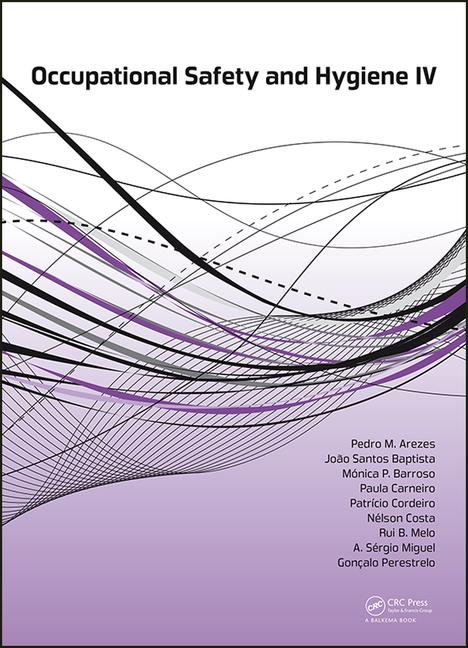The smallest of the three (fluid power) started their journey with one location doing $8MM in sales with 22 employees. Their CEO had been working hard for 15 years to achieve only mediocre success. Their 10-year, trailing average pre-tax return on total assets was 7%: a typical, mediocre distributor rate. After 30 months, their ROTA is now 22% with these additional benefits:
● Sales have been growing at a 17% per year rate (over twice the industry average). Suppliers love them!
● Active accounts dropped from 1,050 to 893 (some small losers left over price increases to become new losing customers for other full-service competitors).
● At the outset, only 20% of their customers were profitable and generating 150% of the operating profit total. (The other 80% lost the extra 50 percentage points. The biggest losing 1% of the customers consumed 20 of the 50 extra profit percentage points.) After 30 months, 90% of all customers were profitable. The average, profit-per-account had grown from $30 to $941. The sales share of each account has also grown significantly as customers rewarded this distributor’s better supply-chain-math solutions.
Profit per employee grew from $1,590 to $75,597.
The average “gain-sharing bonus” for all 22 employees went from zero to $6670.
They now have a “high-performance, service culture” in which everyone is turned on.
The CEO is now a hero to all his “stakeholder groups”: Customers, employees (all their friends and family want to be hired there), most (all) best reps who made the transition (a few did not want to change and are gone), suppliers, and, non-active, family shareholders.
He’s working less and making more. Most of his time is now spent working ON the business not IN the business.
What are these heroes doing that you aren’t?
What they are doing is what is covered in this book, which includes the following and more:
1. The answers to all of the objections that (your) previous (fizzled?) “customer-profit ranking” experiments may have run into. Old beliefs are still partially true, they just need expanding.
2. New ways to fine-tune your company’s financial past: notably, increasing margin percentages on both — underpriced customers and items — in creative and sustainable ways. (“Strategic Pricing”). And, the emphasis will be not on just one-time, remedial fixes, but how to systematically prevent economic, selling inefficiencies from creeping back in.
3. More effective ways to — identify, re-service and dominate — “niches” of customers. (“Nichonomics”)
4. How to get good at selling “Supply-Chain-Math” (SCM) solutions for the (often big) hidden inefficiencies that exist within the buy-sell processes between you and your big customers (and some suppliers) for both you and them.
5. Just how big the cross-subsidies are that exist amongst active SKU’s and what to do about both winners and losers.
6. How all of these building block concepts add up to “Value Exchange Management” which allows a distributor to:
a. Determine why every customer and item is profitable or not.
b. How to transform all losing elements into winners to approach 100% of all customers being profitable with many buying a lot more. Your future financial profits will grow much higher than today’s “internal peak profits” (the sum of all of the winners before loser costs are subtracted away to yield current financial profits).
c. Re-think the “service model” for chronically small customers with small orders.
d. Allocate more total-team sales and service intensity to the few, biggest, “net-present-value” (NPV) customers. The goal for these accounts is to use SCM solutions to turn these accounts into 100%-share partners.
e. How to re-orient your sales force to fill most progressive customer’s supply-chain-buying needs.
7. What is a sustainable, high-performance, service culture?
a. Why is it necessary for niche service-excellence and heroic-extras for key accounts?
b. Why it is necessary and desirable for sustainable success?
c. How can you use the windfall profits from the LIPA-Journey to boot-strap your way to having a great culture and becoming a star company like: Costco, FedEx, Southwest Airlines, Whole Foods, etc.?
8. Why your new “mission” may become: To Deliver Premium, “All-Stakeholders-Win Economics” (due to steady innovation with and by all groups)?
9. Why the LIPA-Journey is doable and risk-free if it is taken one, small, informed step at a time (Kaizen) which good, LIPA-Management reporting allows you to do (v. jumping into something too-new with both feet)?
Overwhelmed? You can do it too with Kaizen steps!
The nine points above, peppered with new terms and concepts (for many readers), may seem overwhelming now. But we have all done micro-to-macro journeys before. As children, we start learning from the micro-events in front of our noses. We’re fascinated with what is under the rocks under the trees. As adults, we are able to piece together the micro lessons to see the macro picture: it’s a forest! It is a dynamic ecosystem with both living and dying parts to it. Once we understand the macro connections, we can make more sense and achieve more efficiency and effectiveness with micro event decisions.
If you and/or key team members are initially confused by (and scared of failing at) concepts like – “custom, supply-chain-math solutions” – have faith and be patient. Get, instead, a rough idea of the big picture possibilities and then just start one, small-as-needed, comfortable step at a time at the micro level. For each step, there will be journey tools, community practitioners to call and YouTube clips. The clips can be watched by a would-be teacher as many times as necessary to then be prepared to lead a training session. Who can trust, after all, what our leaders can’t explain with confidence and enthusiasm?
The upside opportunities covered in this book will fuel big growth (beyond what neophytes can imagine) in a distributor’s employee-engagement, service value, sales and profits. Financial profits – the last, down-stream, lagging indicator – will increase because of innovative improvements in the upstream Key Performance Indicators (KPIs) of more net-profit dollars per: 1) line-pick, 2) order, 3) customer, 4) sales-call, 5) customer-niche, 6) supplier and 7) Full-Time Equivalent Employee (FTEE).
A more detailed outline of our journey-map
Below are the stages and steps for the journey, which this book will chronologically follow.
Stage One: Measure both customer and item cross-subsidies:
1. Be curious! Sense that all customers and items are NOT equally profitable. Find out how big the cross-subsidies are amongst your customers and items. And, find out what the causes are for the extreme profits and losses which will, in turn, lead you to everyone-wins opportunities. Staying curious and open-minded isn’t as easy as you might think. Who, after all, wants to believe that some big, “best customers” are quite unprofitable? And, not everyone is going to want to change their habitual ways of dealing with customers even if it is in everyone’s interest including their own.
2. Design (with an outsourcing specialist?) an “optimally complex” Cost-To-Serve (CTS) MODEL to get “good-enough estimates” of at least each customer’s net profitability (“Customer Profitability Analytics” or CPA).
a. And, while more complicated, consider a model that calculates the net-profit or loss on every line item event (Line-Item Profitability Analytics or LIPA) which will prove to be far more powerful.
b. LIPA is vital to identifying and creating custom, service-value chain solutions for big customers that will then lead to winning bigger share of the customer’s spend and increase barriers for competitors.
3. Get the big (cross-subsidy) pictures. Create profitability RANKING REPORTS and “WHALE CURVES” for: customers, segments, territories; items, suppliers, categories; etc.
4. Suspend disbelief and start to steadily expand, update and renew organizational beliefs. Continuous organizational learning from cross-subsidy discoveries can’t happen if nit-picking criticisms and objections to continuing along a discovery path win the day. Have faith that insights lie ahead that will improve our ability to:
a. Build customers’ bottom lines with...
b. Unique value propositions well sold...
c. To earn bigger share of accounts that will grow sales and win maximum supplier support…
d. And, improve profits multiple ways.
Stage two: Find the causes, insights, solutions, principles behind the extremes
5. Learn what deep-dive tools are needed to determine the CAUSES behind the extreme winners and losers. These tools will also be vital for proving to customers – with their own activity math – the need for co-created Custom, Supply-Chain Solutions (CSCS).
6. Learn common-for-all-distribution-channel INSIGHTS that can be gleaned from the causal information.
7. Learn how to convert these INSIGHTS into ACTIONABLE SOLUTIONS to make the best customers/items even better and transform the big losers into big winners.
8. From the tactics and case study experiences will emerge new management SUCCESS PRINCIPLES.
a. These principles work especially well in mature, consolidating channels in which commodity brands are widely distributed.
b. These principles may seem to conflict with traditional beliefs rooted in financial-management and promoting products to increase sales volume for bigger-is-better, economies of scale. Step #10 below will, however, help you to turn false-choices (old-ways or LIPA-new-way conflicts) into and/both innovative principles. Old-ways will still have specific, situational applications. But, they will need to be updated and rounded out.
Stage three: Re-tune the culture to execute
9. Sustainable growth in profits must be supported by the right LIPA Management TRACKING AND FOCUS REPORTS” that – demand, discipline and support – continuous improvement for the action solutions.
10. RE-EDUCATION, RE-SKILLING AND RE-COMPENSATING of ALL team members is necessary to fully achieve and maintain the opportunities revealed by LIPA.
a. Instead of reps selling and quoting prices on commodities, the team will be helping big customers to pinpoint hidden pockets (or buckets) of buying inefficiencies that are costing both partners and solving them.
b. These changes will seem more challenging than they are. Repetitive case-study education about successful LIPA distributor pioneers recounted in my 450+ YouTube-video-clips (average length: 4 minutes) will help. And, fast economic gains for EVERY stakeholder group will eventually convince even the most stubborn (and scared-of-trying-something-new) sales rep.
11. 100% Engaged Alignment. Connect every employee’s heart, mind and wallet to all-stakeholders win profit-improvement development.
a. You will learn how “Nichonomics” + Supply-Chain-Math (SCM) solutions add to a vision that every employee can understand, buy into and be rewarded by. LIPA Management solutions will support total-team focus on customer-niche-centric objectives that will:
1. Capture 50% to 80% of the entire niche “profit pool”.
2. Maximize net profit per: pick-line; order; delivery; customer; sales rep sales call; and Full-Time Equivalent Employee (FTEE).
3. Achieve both economies of operational scale within a focused niche and big barriers to entry for other competitors.
b. BUT, this scenario will require ending rep incentives on “Gross Margin Dollars” (GM$) dollars and Gross Margin Percentages (GM%). Such incentives force reps to only look at a part of the total “Value Exchange Management” relationship with customers. They aren’t paid to understand, sell and install “Custom, Supply-Chain Solutions” (CSCS). The how-to’s of transitioning to net-profit-improvement, incentive plans will be covered.
c. And, Open Book Management (OBM) coupled with everyone able to earn a net-profit-growth, gain-sharing bonus will work well if you have a smart, one-niche-at-a-time, focused strategy.



